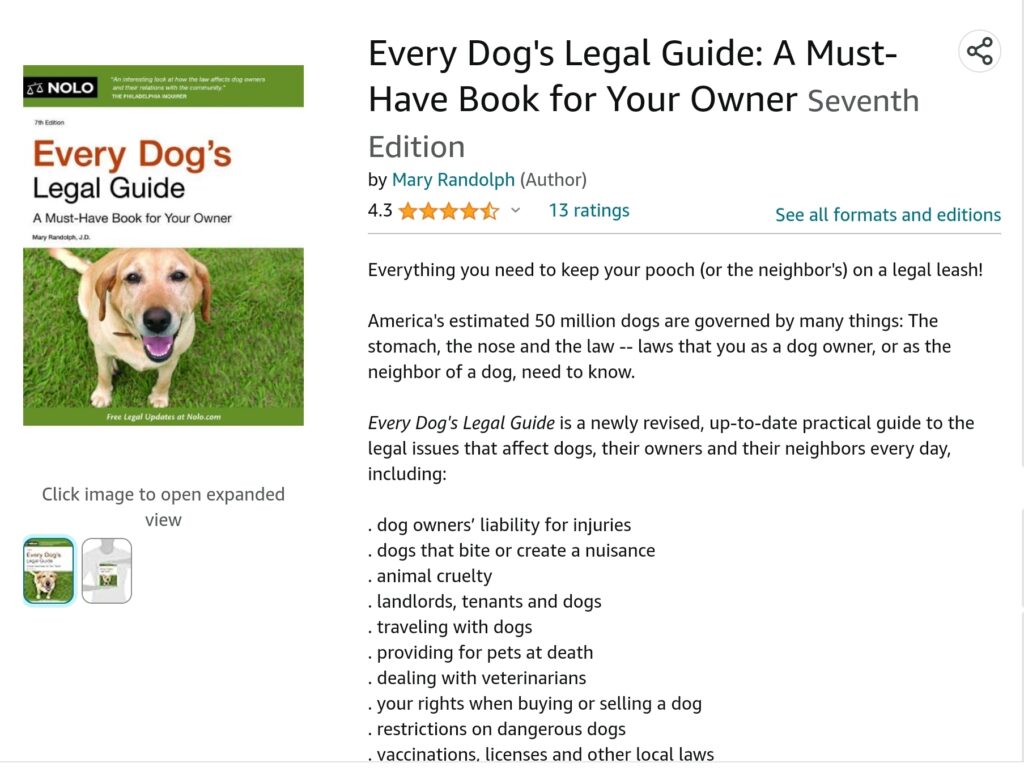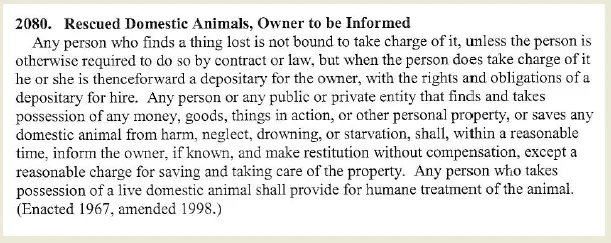
Proving ownership of your pets may seem simple, but it actually isn’t. It’s the sort of thing you won’t think about until you have a problem and then it may be too late. Check out these seven ways to prove pet ownership so you can plan before disaster strikes.
When does this happen?
Dog, cat, and other pet ownership/custody disputes come up more often than you may think. Through my work in shelters I have personally been involved in or aware of a number of cases that were just heartbreaking.
Sadly common is a divorce or separation between romantic partners. Both are attached to the pet and won’t give up custody to the other. Sometimes this ends up in court.

Lost pets are taken in by finders who may mean well, but assume the pet is abandoned and keep it, never looking for an owner. When the original owner becomes aware weeks, months, or even years later, they could have a fight on their hands trying to regain custody.
Pets ending up in shelters can be adopted out after a very short hold period — in California it’s just 72 hours! — and the original owner in most cases has lost all rights to get their pet back.
Often individuals leave a pet with a friend or relative temporarily because they can’t keep it. Examples include going into the military, traveling for an extended period of time, or being incarcerated. Sadly, sometimes when the person returns they find that the caregiver got tired of the responsibility and gave the pet away.
Who decides?
Who gets to decide the rightful owner? Who has the authority to make that determination? It depends. Many law enforcement agencies won’t get involved at all, saying it’s a civil matter, up to the parties involved to sue each other for ownership rights.
In a shelter, the customer service staff or management will use whatever protocols they have to make the determination. It can get tricky when two or more owners show up, although this is rare.
Historically courts handled pet “custody” cases as disputes over property, with the judge making the decision. Recognizing that pets should be handled differently from cars and TVs, California, Alaska, and Illinois have adopted new laws instructing the judge in such cases to consider the pet’s best interest in the decision. In one especially dramatic case, a divorcing San Diego couple went to court fighting for possession of their dog Gigi. They ended up spending two years and over $150,000 in legal fees to settle the matter (the wife got the dog).

What is considered proof of ownership?
#1 Microchip
A registered microchip can help to establish ownership but it isn’t definitive, legal proof. The primary reason is that, as I discuss in my other microchip articles and videos, anyone who has the chip number can register it.
As mentioned, sometimes more than one owner can come to a shelter to claim a pet. This may happen because the chip is registered to multiple parties, whether in the same registry at different times or in different registries.
Thanks to microchips, we are seeing an unprecedented number of reclaims many years after the pet went missing. However, these situations can also lead to disputes, as a second owner has been caring for the animal for months or even years.

All pets should be microchipped and registered in any case. If they go missing and end up in a shelter, a quick scan will provide your information and give them a quick ticket back home.
#2 Breed registration papers
Registration documents can help to establish ownership but, like microchips, aren’t definitive legal proof. Most registries, like the American Kennel Club (AKC), will say that they are not a policing organization and will not get involved in ownership disputes. The following is stated on their website: “AKC registration is not legal title to a dog, and the AKC itself cannot settle ownership disagreements.” In fact, there is a document on their website called “Self Help Guide to Resolving Ownership Disputes.”
Things can get extra complicated with registered purebreds, as some folks have co-owners, show handlers, and breeding leases. When your dog (or horse) is not in your custody, strange things can happen, so these arrangements are best avoided unless you explicitly trust the other person and have a clear written agreement.

While these organizations typically won’t get involved, having registration paperwork in your name is just one more point in your favor, especially when combined with other forms of ID like a registered microchip. Keep any paperwork in a file cabinet or an electronic folder for easy access when needed.
#3 Shelter or rescue adoption papers
I’m opening myself up for some criticism when I state that THERE IS NO SUCH THING AS PET ADOPTION. What? That’s right. Legally animals are considered property, so an “adoption” is a sale of property. As animal lovers we don’t see it that way, but the law is what it is and it’s important to remember when ownership comes into question.
Some shelters have a waiting period of up to 30 days to give an original owner a chance to reclaim an adopted pet. Understandably some shelters don’t have this policy because they don’t want to be stuck in the middle of a dispute, but I think it’s a good policy. Imagine if you went out of town or were in the hospital for a week then returned home to find your beloved pet in someone else’s home. Wouldnt you want a chance to get them back?
Like breed registration documents, adoption paperwork isn’t a 100% guarantee of ownership, but it can certainly help, so keep copies of it along with your pet’s vet records and other important items.
#4 Collar with ID tags or license
In my opinion, every dog should wear a collar with ID at all times. It’s a quick ticket home should he go missing. I’m not a fan of collars on cats, but you can decide that for yourself.

While a good and low-tech method of identification, collars and tags can of course fall off or be removed. However, having such collars and tags in your possession can show that you are the person responsible for the pet. Even better is a license tag, as this shows that you are paying the fees to your local agency responsible for rabies control. Since that agency may be the police or animal control, they will be more likely to consider you the rightful owner rather than someone else who shows no proof.
#5 Possession
As the saying goes, “Possession is 9/10ths of the law.” This can prove true in many cases, as long as the property or animals in your possession were obtained legally.
If you have been caring for a pet for a long period of time, many animal control agencies will consider it yours. This will only come into question if someone else comes forward and claims to be the owner. Did someone give you the animal, and do you have any records to prove this? Did you adopt from a shelter after the legal hold period? Did you find the animal as a stray and keep it? If you have no proof that you looked for the original owner (found report to shelter, internet posts, found signs) they may have a case to take their pet back.
Shelter hold periods can be quite brief, often 3-5 days, but the laws for individuals finding a stray are vague. Here is the snippet from the California code.

The law doesnt specify what the “reasonable time” is, but many interpret that as 30 days. Whatever you decide, do your due diligence to locate the owner. It’s the right thing, and when you do go ahead and keep the animal you don’t have to worry about someone trying to take them away months or years later.
#6 Vet records
Vet records, especially recent ones, don’t prove ownership per se, but do show that you are the person taking responsibility for the pet’s care.
Veterinarians don’t like to get involed in ownership disputes, which is why they typically won’t scan for a microchip unless you ask, and they won’t check registration for you. Vets are compelled by law and by good conscience to treat medical emergencies in stray animals, but as soon as the animal is stable they will transfer it to the local shelter so they can deal with the determination of ownership.
Like breed registry or adoption paperwork, vet records should be kept in a file cabinet or an electronic folder for easy access when needed.
#7 Photos
In today’s world, everyone has a phone that can take pictures. Even your Grandmother probably has one! My phone and social media feeds are filled with pictures of my pets and horses.If someone comes forward to claim a pet and they don’t have any photos, they are probably not telling the truth.
I have seen shelter staff use photos as a means of identifying an impounded pet’s owner. I have seen these folks identify an owner after a Facebook search showed pictures of the pet going back years. Keeping a good photo of each pet is a good idea for this reason and also if they go missing so you can make signs and internet lost posts.

Keep your pets safe
It goes without saying the prevention is key, but often we put things off when they don’t seem important. First, do all you can to keep your pets contained safely on your property. This will lessen the chances of them getting lost and bein taken by another person or brought to a shelter. All pets should be microchipped and registered. It’s inexpensive and provides lifetime ID. All dogs should wear collars with ID. Make clear, preferably written, arrangements with anyone who will be caring for your pets, especially on a long term basis. While none of these seven methods are 100% proof of ownership, more than one in combination will go a long way in showing that you are the rightful owner.

